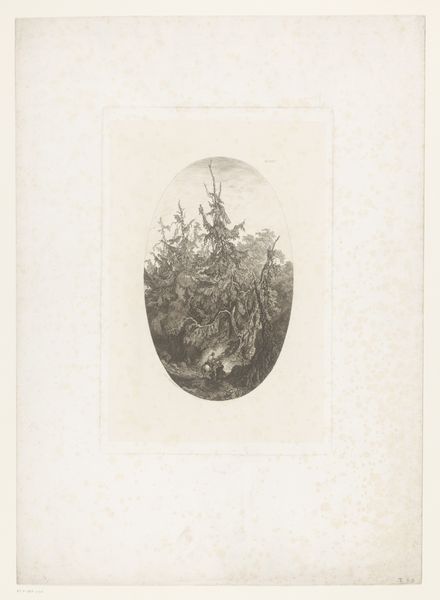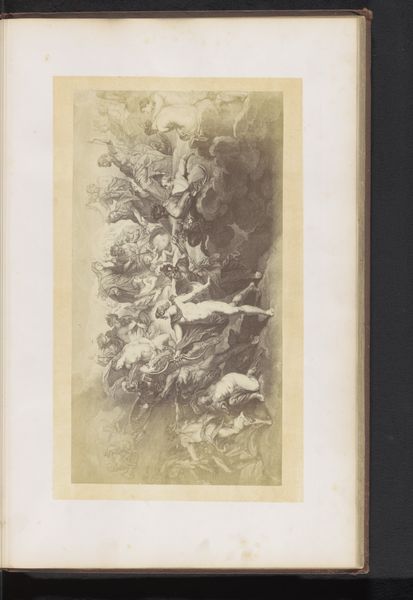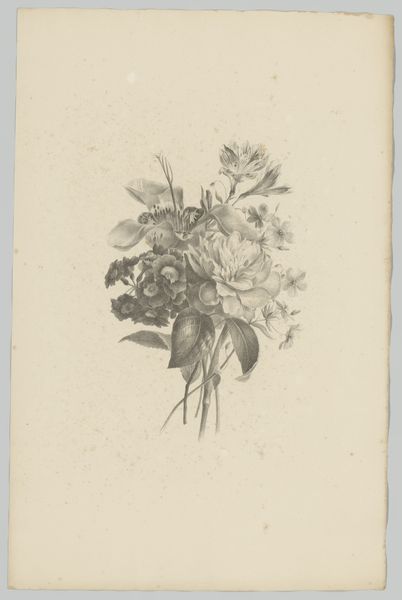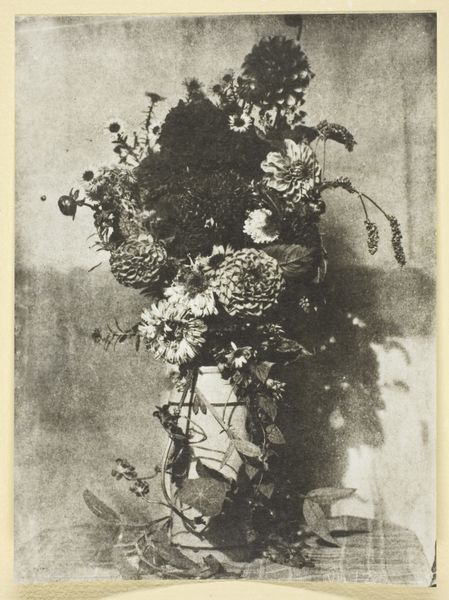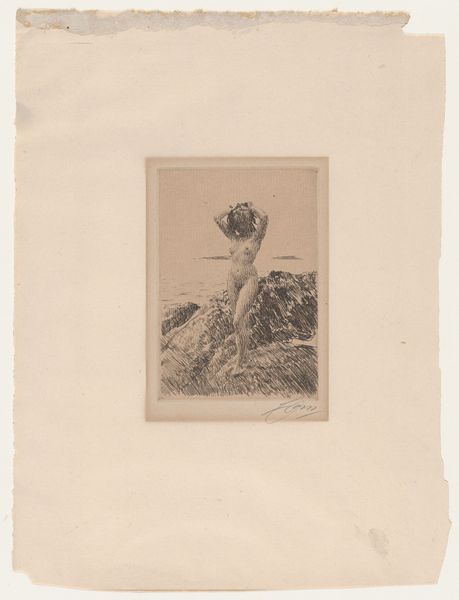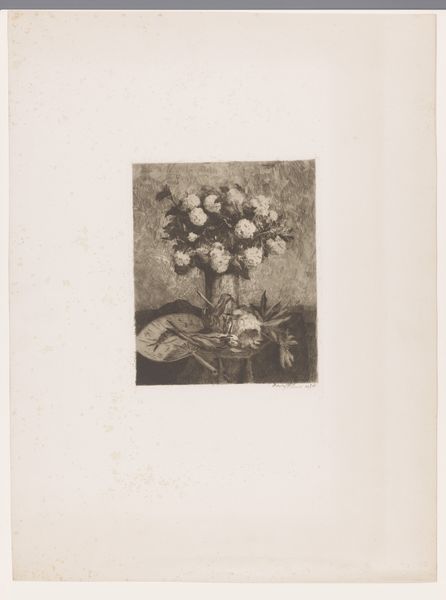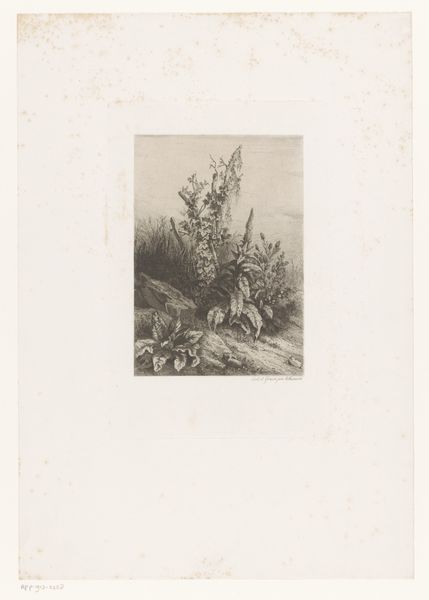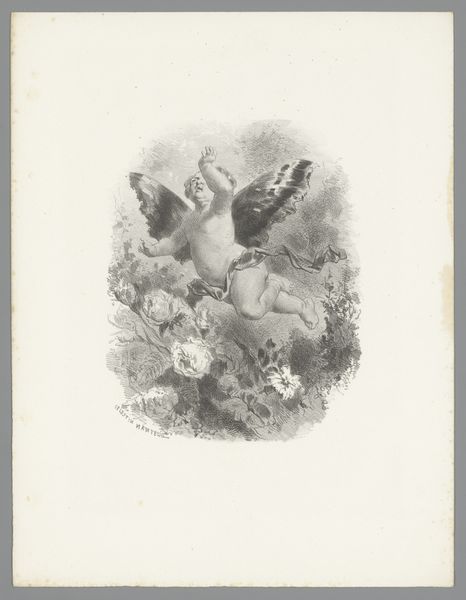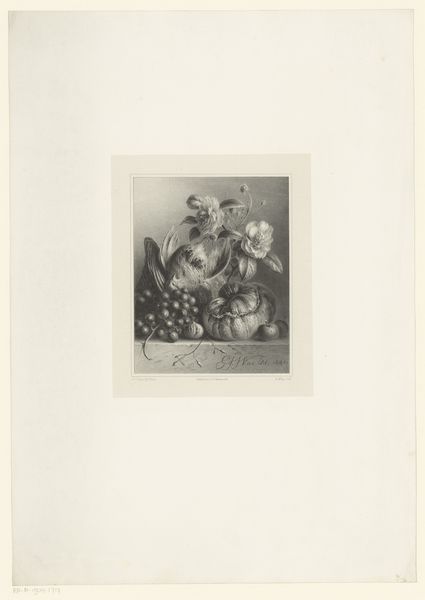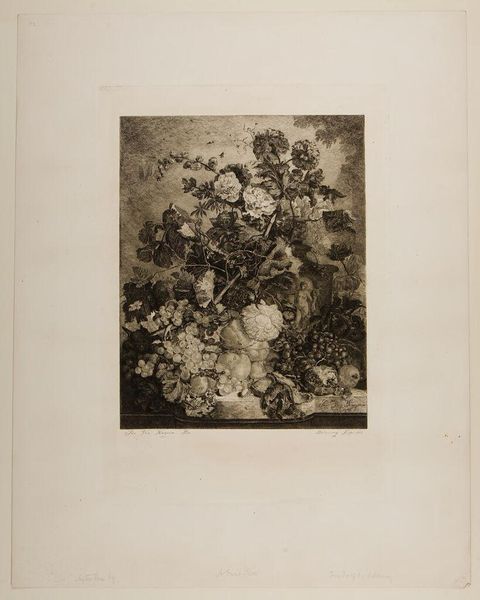
Dimensions: height 136 mm, width 95 mm
Copyright: Rijks Museum: Open Domain
Curator: Let's delve into "Bloemstuk op tafel," a late 19th-century albumen print by H.F. Kramer. What are your initial thoughts? Editor: The sepia tones lend an antique feeling. The overall composition is heavily vertical. It seems almost sculptural—stark, in its construction, given the expected lightness of flowers. Curator: The weightiness speaks to the socio-cultural context. Bouquets like these, meticulously arranged, were common in Victorian photography, signaling prosperity and carefully constructed identities, think marriage announcements and celebrations. Floral arrangements codified social standing, not merely aesthetics. The presence of what appears to be the number “25” at the base crafted of flowers could be an indicator for the number of years a couple had been married for or possibly even the age of someone on their birthday. Editor: True, that floral “25” creates an interesting visual focal point. The artist skillfully uses gradations in light and shadow to articulate depth despite the narrow range of tones. Note the stark textural differences—the delicate petals of the blooms against what appear to be spiky thorns. What is this contrast hoping to illustrate or present the audience. Curator: That contrast echoes broader Victorian ideals about women - simultaneously delicate and capable. Flowers symbolized women’s fragility but the careful arrangement, speaks to control. Remember also the prevalent language of flowers at the time, where specific blooms conveyed particular messages about love, mourning, or remembrance. Editor: And considering photography’s emerging status in the late 19th century, staging these highly stylized arrangements provided both a means of artistic expression and social validation. It captured idealized visions of life at the time. The medium was often used to enforce societal constructs in which wealth, love, and power all took the form of photographable evidence. Curator: Precisely. So while at first glance this seems to be simply a still-life, "Bloemstuk op tafel" reveals far more about the societal values and aspirations of its time. The arrangement stands in as the human subject, highlighting an expression of selfhood constructed within prescribed norms. Editor: Yes, analyzing this piece beyond its representational qualities opens avenues for fascinating socio-cultural explorations. Curator: It shows how much the intersection of art, and photography at this time were very much intentional.
Comments
No comments
Be the first to comment and join the conversation on the ultimate creative platform.
